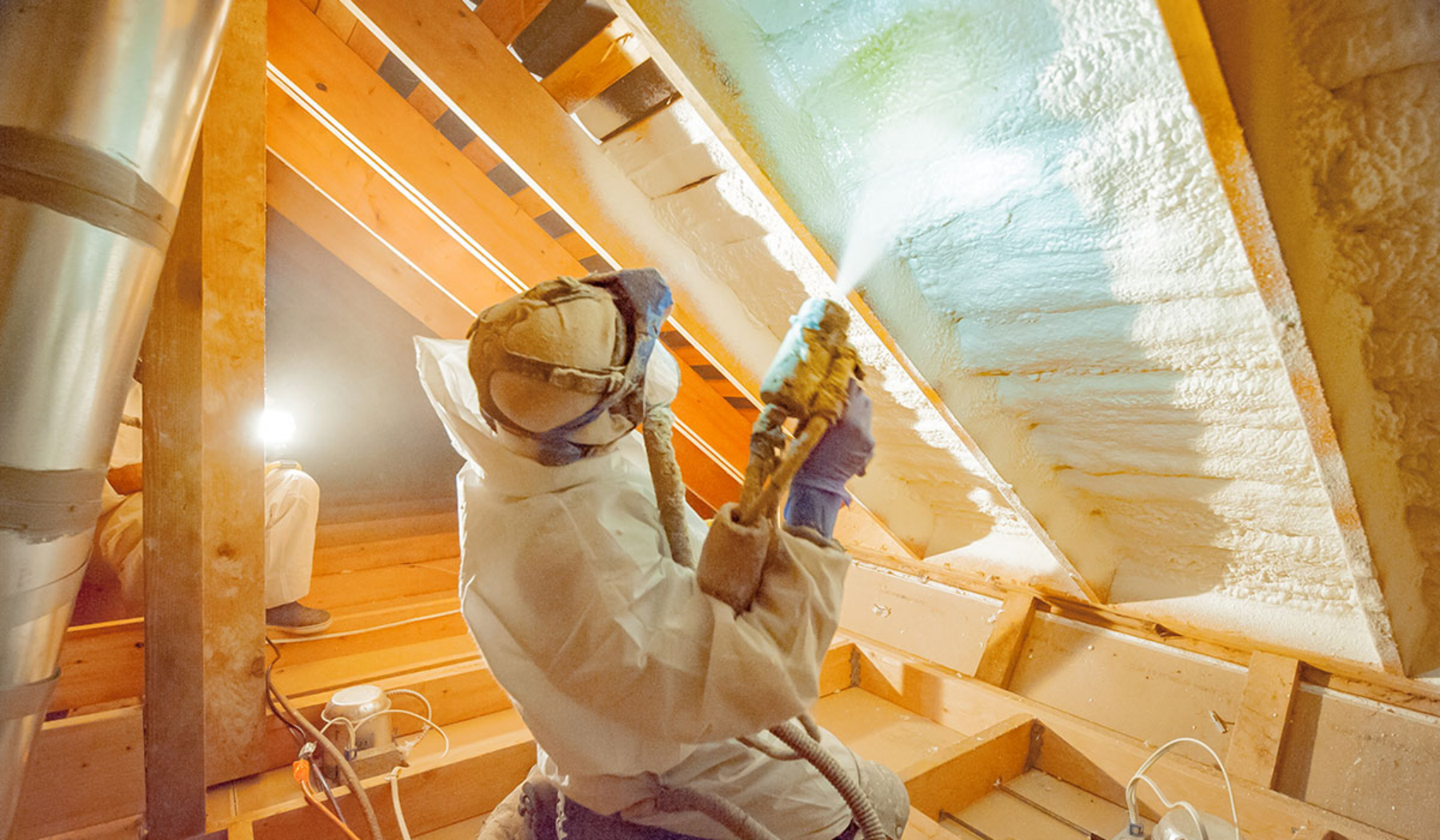Understanding Spray Foam Application on Existing Insulation
Spray foam insulation is widely recognized for its energy efficiency and air-sealing properties. Homeowners and contractors often ask whether it can be applied over existing insulation. The answer depends on several factors, including the type of existing insulation, its condition, and the goals of the project. This guide explores the feasibility, benefits, potential risks, and best practices for installing spray foam over other insulation materials.
Evaluating Existing Insulation Before Applying Spray Foam
Before adding spray foam over existing insulation, a thorough assessment is necessary. The primary considerations include:
1. Type of Existing Insulation
Different types of insulation behave differently when covered with spray foam:
- Fiberglass Batts: These can trap moisture if enclosed by spray foam, potentially leading to mold growth.
- Cellulose: Settled or degraded cellulose can compress under the weight of spray foam, reducing effectiveness.
- Rigid Foam Board: Often compatible with spray foam, provided it is clean and properly adhered to surfaces.
- Loose-Fill Insulation: Generally not ideal for encapsulation as it can shift, reducing the spray foam’s ability to create a solid air barrier.
2. Moisture and Mold Concerns
Existing insulation that has absorbed moisture may compromise the effectiveness of the new insulation. If mold or water damage is present, removing the old insulation before applying spray foam is essential.
3. Structural Integrity
Insulation that is compressed, sagging, or deteriorating will not provide a stable base for spray foam. Removing or replacing compromised insulation ensures better long-term performance.
Benefits of Applying Spray Foam Over Existing Insulation
When properly installed, spray foam over existing insulation can enhance thermal performance and air sealing. Key advantages include:
- Improved Energy Efficiency: Spray foam creates an airtight seal that minimizes heat loss and air infiltration.
- Added Structural Strength: Closed-cell spray foam can reinforce walls and ceilings.
- Moisture Resistance: Helps prevent condensation and mold growth.
- Enhanced Soundproofing: Reduces noise transmission through walls and ceilings.
Potential Risks and Challenges
Despite its benefits, covering existing insulation with spray foam presents some risks:
- Trapping Moisture: If the existing material holds moisture, it can lead to rot and mold issues.
- Reduced Effectiveness: Poor adhesion to old insulation may limit spray foam’s benefits.
- Increased Costs: Additional labor may be required to assess, remove, or modify the existing insulation before application.
Best Practices for Installing Spray Foam Over Existing Insulation
To maximize performance and avoid issues, follow these guidelines:
1. Inspect and Prepare the Area
- Conduct a moisture test to ensure the insulation is dry.
- Remove any insulation that is wet, moldy, or compressed.
- Clean surfaces to improve adhesion and prevent air pockets.
2. Choose the Right Spray Foam Type
- Closed-Cell Spray Foam: Ideal for adding structural integrity and moisture resistance.
- Open-Cell Spray Foam: Works well for soundproofing but allows some air and moisture passage.
3. Apply Properly for Maximum Efficiency
- Use a professional-grade application to ensure full coverage and adhesion.
- Avoid overfilling cavities, which can cause expansion issues.
- Ensure ventilation during installation to prevent off-gassing accumulation.
When Removal of Old Insulation is Necessary
In some cases, removing the existing insulation is the best approach. Consider removal if:
- The insulation is wet or moldy.
- It has significantly degraded over time.
- The home has unresolved air leaks or ventilation issues.
A professional evaluation can determine whether removal is necessary or if a hybrid approach can be used.
Professional Assessment and Installation
Adding spray foam to an existing insulation system requires expertise to avoid moisture problems and ensure energy efficiency. A professional can:
- Conduct thermal imaging to locate air leaks.
- Test moisture levels before application.
- Recommend whether removal or encapsulation is the best approach.
For expert guidance, contact R-Factor Spray Foam at (352) 663-5905 or email [email protected] to discuss your insulation needs.
Frequently Asked Questions
1. Can I spray foam over old fiberglass insulation?
Yes, but only if the fiberglass is in good condition and not trapping moisture. Otherwise, removal is recommended.
2. Does adding spray foam over insulation improve R-value?
Yes, spray foam enhances thermal resistance and air sealing, improving overall insulation performance.
3. Will spray foam stick to rigid foam board insulation?
Yes, as long as the surface is clean and dry, spray foam adheres well to rigid foam.
4. Is it necessary to remove loose-fill insulation before spraying foam?
It’s often best to remove it to ensure proper adhesion and avoid uneven application.
5. Can I install spray foam myself over existing insulation?
While DIY kits exist, professional installation ensures better adhesion, even application, and reduced risks.
6. Will spray foam cause condensation problems?
Not if applied correctly. Proper ventilation and moisture checks prevent condensation issues.
7. How much does it cost to add spray foam over existing insulation?
Costs vary based on the area, type of foam, and preparation work required. A professional quote provides accurate pricing.
8. Is closed-cell or open-cell spray foam better for covering old insulation?
Closed-cell provides better moisture resistance and structural support, while open-cell is better for soundproofing.
9. Can spray foam be applied in an attic with existing insulation?
Yes, but it’s essential to check for moisture issues and ensure proper ventilation.
10. How long does spray foam insulation last?
Properly installed spray foam can last for decades without significant degradation.


